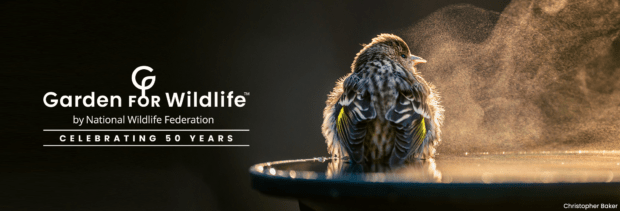We have much more to do and your continued support is needed now more than ever.
Creating a Bee Garden
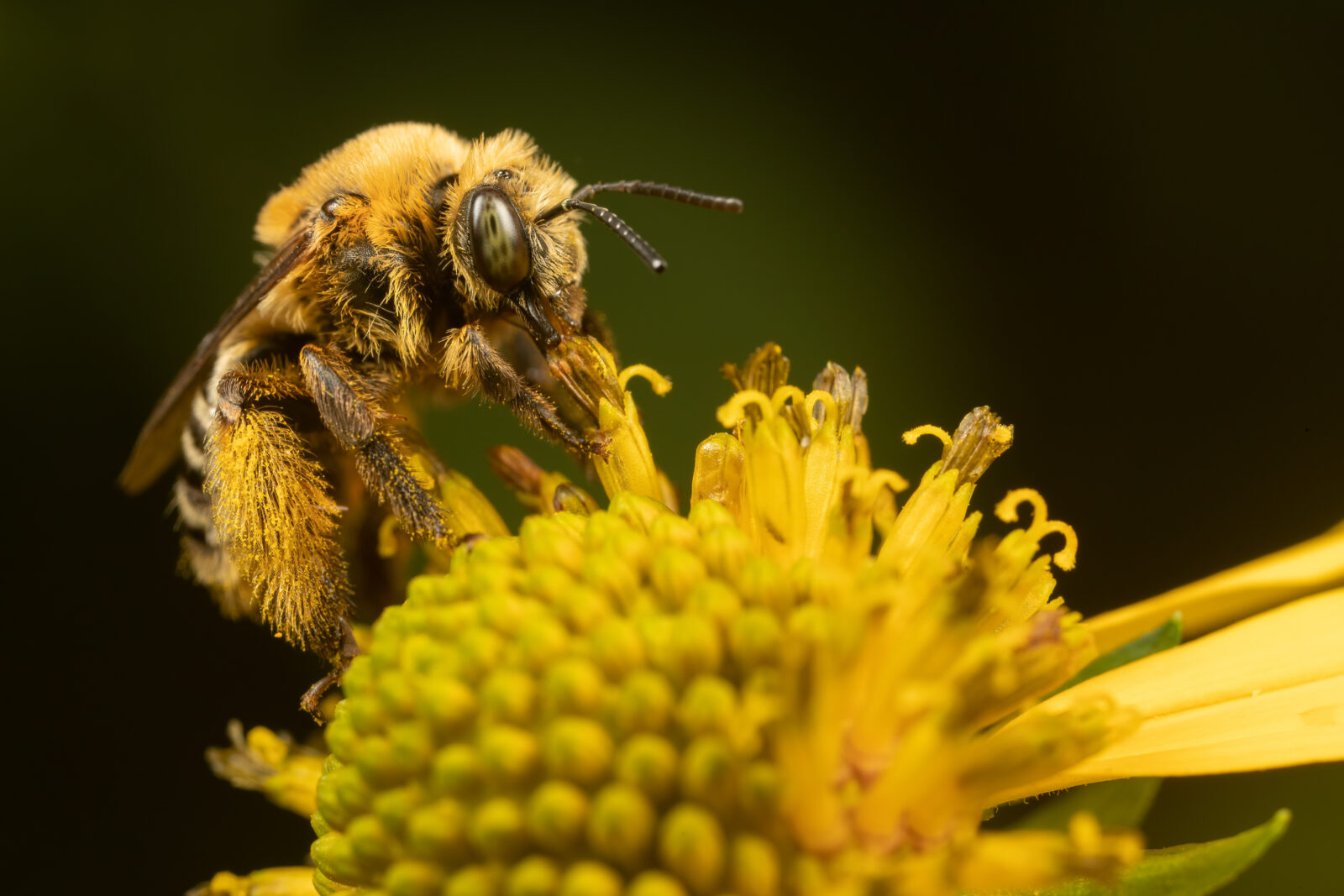
Bees are incredibly important wildlife. Yes, insects are wildlife–and they’re a group of wildlife that we all have an opportunity to help right in our own yards and gardens. Especially bees.
Ecological Role of Bees
One of bees’ most important ecological roles is as pollinators. They visit flowers to feed on nectar and gather pollen to feed their young. In doing so bees spread some of that pollen and fertilize or “pollinate” the flowers, which then form seeds that become the next generation of plants. Those seeds are often packaged in fruits, berries and nuts that then become food for other animals, from birds to reptiles to mammals (including us). Those animals then disperse the seeds away from the parent plant in their droppings, which serve as fertilizer.
Some 85 percent of flowering plants rely on animal pollination. With over 20,000 bee species on the planet and around 4,000 that are native to North America, bees are some of the most important pollinators due to sheer numbers, species diversity and co-evolution with the plants they pollinate. Bees are also tremendously important crop pollinators that we rely on for much of our own food. Without bees, many plants in nature couldn’t reproduce, and many other wildlife species would lose critical food sources (again, including us).
Bees in Trouble
Yet many bee species are rapidly disappearing. The honey bee has received a lot of attention because of its agricultural importance, but here in North America honey bees are an introduced non-native species largely existing in managed hives. While the honey bee industry has experienced some challenges that need to be addressed, honey bees are not at risk of extinction. Yet the attention the honey bee has gotten as an agriculturally important domesticated species often overshadows the decline of our wild, native bee species.
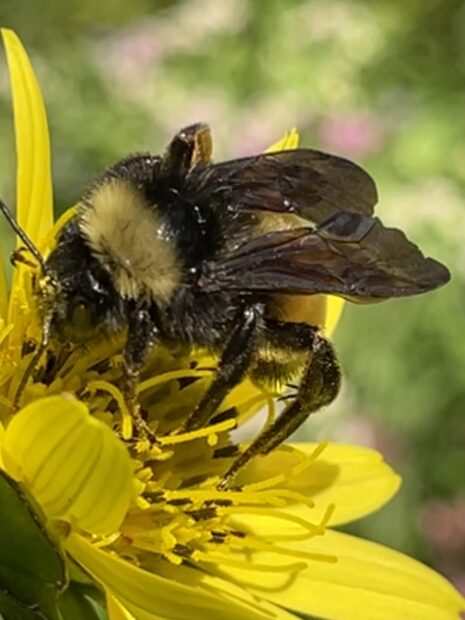
For example, the rusty-patched bumble bee is now federally listed as an endangered species. The American bumble bee and the western bumble bee are also disappearing before our eyes but aren’t protected. The population status of many wild native bee species is unknown due to lack of funding and research. Habitat loss, pesticide use, disease and climate change are all factors in the decline of our native bee species, as is competition from non-native honey bees. In North America, wild native bees are the natural pollinators of 80 percent of flowering plants in the wild (as well as some crops), so any decline in their populations is significant.
Now that we’ve established how important our wild native bee species are, how can we help them? Here are four things you can do in your own yard or other garden space to support native bees.
Four Ways to Make Your Garden Bee Friendly
Plant Natives
Our native bees co-evolved with native plants and rely on them. Many native bee species are pollen specialists that can only feed their young pollen from specific native plants. Without those plants, the bees cannot survive. Fill your yard with a diversity of blooming native trees, shrubs and wildflowers that collectively provide blossoms for bees from early spring into the fall, and you’ll ensure native bees have food to support their populations. Use the Native Plant Finder to generate list of the most important plants to support pollinators native to your zip code or order Garden for Wildlife Native Plant Collections directly.
Reduce the Size of Your Lawn
One of the easiest ways to provide more native plants for bees is to convert some of your lawn into new planting beds each year. Keep however much lawn you actually use and let the rest become beautiful garden beds to support pollinators like bees and other wildlife.
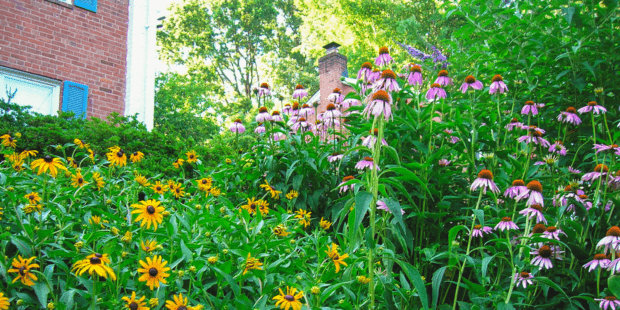
Stop Using Pesticides
Broad-spectrum insecticides kill bees directly (including those sprayed by mosquito control companies and applied by lawn care companies) and herbicides kill native plants on which bees rely. There are many tried and true organic gardening techniques as alternatives to pesticides for the home landscape.
Offer Nesting Habitat
The vast majority of bee species—around 90 percent–are solitary. That means they don’t live in hives, they don’t have queens, they don’t make honey and they won’t sting. Individual female bees nest in small tunnels in the ground, in dead wood or hollow plant stems. They build a series of tiny chambers in the tunnel, each with an egg and a ball of nectar and pollen as a food source for the young.
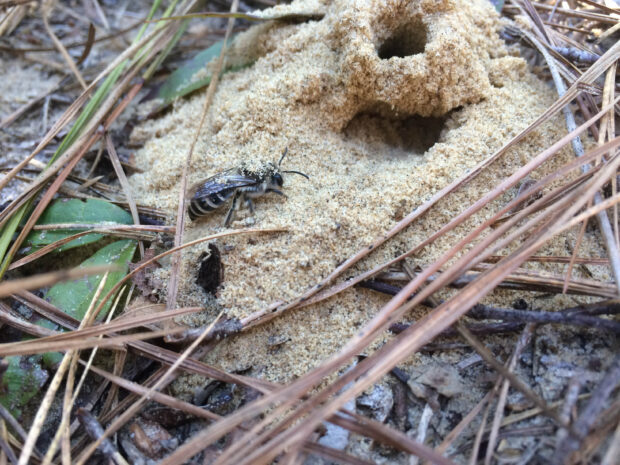
How do you provide nesting habitat for these solitary bees? If you see an individual bee going in and out of such a tunnel, simply leaving it alone is the best thing to do. Add some old logs to your garden beds and bees will use them to nest as they decay. Don’t cut your perennial stems down in the fall. Instead, leave them standing until early spring. The perennial seed heads will feed wild birds through winter. In early spring, you can then cut the stems down to around 10-12 inches. Those cut stems will become nesting habitat for bees as they emerge in the spring and summer. As the plant sprouts new growth in the spring, it will quickly hide the old stems.
Our native bumble bees are social species and they do have queens and hives. The queens overwinter underneath the natural leaf layer that forms in the fall under trees and shrubs, so utilize your fallen leaves as natural mulch in your garden beds to support them.
Avoid putting out “bee houses” that have become popular. Many are poorly designed and unless you can commit to the maintenance (which involved harvesting bee pupae, removing parasites, and storing the pupae in your fridge over the winter), they end up attracting as many bee parasites and predators as bees.
